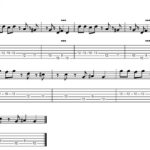Acoustic guitars are beloved instruments, known for their warm, resonant tones and versatility across musical genres. If you’re considering learning to play or upgrading your current instrument, a crucial question arises: How Much Is An Acoustic Guitar? The answer, as with many instruments, isn’t a simple number. The cost of an acoustic guitar can vary dramatically based on numerous factors, from the materials used in its construction to the brand name on the headstock. Understanding these elements will empower you to make an informed decision and find an instrument that fits both your musical aspirations and your budget.
The fundamental principle behind an acoustic guitar’s sound lies in its acoustic soundboard, typically the top of the guitar. This soundboard acts as a diaphragm, vibrating in response to the strings’ energy and projecting sound into the air. Without this resonating surface, the strings alone would produce a very faint sound. The soundboard, along with the guitar’s hollow body, amplifies the string vibrations, creating the rich and full tones we associate with acoustic guitars. The specific woods used, bracing patterns, and overall construction techniques all contribute to the unique tonal characteristics and, importantly, the price of an instrument.
Factors Influencing Acoustic Guitar Price
Several key factors determine the price range of acoustic guitars. Let’s explore some of the most significant:
Brand and Reputation
Established brands with a long history of craftsmanship, like Martin, often command higher prices. Martin guitars, for example, are renowned for their quality and sound, with models like the D-28 being iconic and sought after. While brands like Martin represent the higher end, many reputable brands offer excellent instruments across various price points. You’re often paying for the brand’s legacy, quality control, and the assurance of a well-built instrument when opting for a known name.
Tonewoods and Materials
The types of wood used in an acoustic guitar significantly impact both its sound and its price. Solid tonewoods, particularly for the soundboard, are generally more expensive than laminate (layered) woods. Solid tops vibrate more freely, resulting in richer tone and greater resonance. Common tonewoods like spruce, mahogany, rosewood, and maple each have unique tonal properties and price points. Rarer or higher grades of these woods will further increase the cost.
Construction and Craftsmanship
The level of craftsmanship involved in building a guitar plays a crucial role in its price. Hand-built guitars from individual luthiers or smaller workshops often carry a premium due to the intensive labor and attention to detail involved. Factory-produced guitars can be more affordable, but the precision and care in construction still influence the final price. Features like intricate inlays, binding, and finish can also add to the cost.
Guitar Type and Body Style
While broadly categorized as acoustic guitars, variations exist that affect price. Steel-string acoustic guitars, known for their bright and powerful sound, are incredibly popular. Within steel-string guitars, body styles like the dreadnought (pioneered by Martin), jumbo, auditorium, and concert sizes offer different tonal profiles and playing experiences. Classical guitars, with their nylon strings and wider necks, are another distinct type, often favored for fingerstyle playing and classical music. The specific type and body style can influence the price based on material usage and construction complexity.
Acoustic Guitar Price Ranges: What to Expect
To give you a clearer picture, here’s a general overview of acoustic guitar price ranges:
- Beginner Acoustic Guitars (Under $300 – $500): At the entry-level, you can find decent acoustic guitars suitable for beginners. These guitars often feature laminate woods and simpler construction. Brands offer affordable options perfect for learning.
- Mid-Range Acoustic Guitars ($500 – $1500): This range offers a significant step up in quality. You’ll find guitars with solid tops and potentially solid back and sides, leading to improved tone and playability. Reputable brands offer models in this range that are excellent for intermediate players and even professionals seeking a reliable instrument.
- High-End Acoustic Guitars ($1500+): Professional-grade instruments reside in this category. Expect all-solid wood construction, exceptional craftsmanship, premium components, and superior sound. These guitars are investments, built to last and provide inspiring tone for serious musicians.
Finding the Right Acoustic Guitar for Your Budget
Ultimately, the “right” price for an acoustic guitar is subjective and depends on your individual needs and budget. Consider your playing level, musical goals, and how much you’re willing to invest. Exploring different brands, body styles, and tonewoods within your price range is highly recommended. Visiting a guitar store to play and compare instruments firsthand is invaluable in making an informed and satisfying purchase. Understanding the factors that influence acoustic guitar prices empowers you to find an instrument that resonates with you, both musically and financially.

